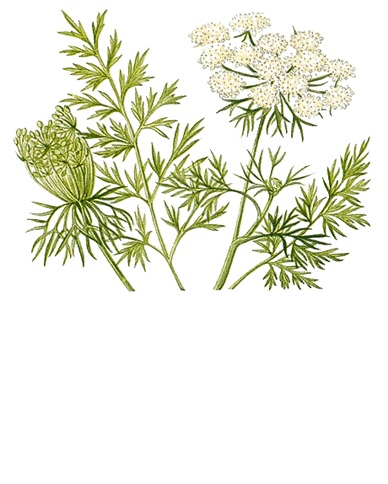 Farmscaping for Pest Management and Pollination - April 22, 2015 Jeff Schalau, Agent, Agriculture & Natural Resources University of Arizona Cooperative Extension, Yavapai County This year’s early and warm spring brought an abundance of aphids and thrips that enjoy feeding on tender new growth. If you were watching closely, this was followed by an abundance of predators such as ladybird beetles and hover flies. Where synthetic pesticides are not regularly used, predators and parasites, also called natural enemies, follow and reduce pest populations. In addition to natural enemies, pollinators such as native bees and honeybees pollinate 80% of our nation’s food crops. Eliminating unnecessary pesticide applications benefits pollinators as well. Insect predators, parasites, and pollinators are beneficial insects that increase production and reduce or eliminate the need to apply synthetic pesticides. Now that we are thinking about reducing or eliminating pesticide applications, let’s learn about a gardening strategy that increases numbers of beneficial insects on your property. It’s called “farmscaping”. Farmscaping is a whole-farm, ecological approach to pest management and uses non-crop plants interplanted with crop plants to support populations of beneficial insects. Farmscaping includes insectary plants (plants that attract and feed beneficial insects) and cover crops to provide habitat elements (food, water, shelter, and space) for beneficial insects. Farmscapers enlist native populations of beneficial insects to assist them by creating prime habitat for them right in the fields. The beneficial insects will be healthier, reproduce more readily, and be more effective at biocontrol when provided habitat with an adequate and easily available diet of nectar, pollen, and herbivorous insects and mites as food to sustain and increase their populations. Flowering plants are particularly important to adults of the wasp and fly families, which require nectar and pollen sources in order to reproduce the immature larval stages that parasitize or prey on insect pests. Farmscaping requires some thought and planning. Simply selecting a random group of plants could result in a situation that favors pest species. This is why it is important to identify those plants, planting situations, and management practices that best support populations of beneficial insects. Farmscaping requires greater knowledge and management skill than conventional pest management. The farmscaper’s payoffs are reduced pesticide use and associated costs, reduced pesticide residues on crops, and an overall safer farm environment with increased biodiversity. Guidelines usually suggest planting 1-5% of the total field area to “farmscaping plants” in rows between crop plants or along windbreaks and borders. Data suggest that planting permanent insectary rows is superior to planting them annually. Depending on the plant species, these “perennial islands” provide food resources for beneficial insects as well as overwintering sites. During the year, beneficial insects can colonize the crop plants directly from the adjacent farmscape. Many gardening catalogs sell seed mixes for farmscaping applications (often called “beneficial blends” or “insectary blends”). These mixes will usually contain plants in the carrot, sunflower, and mint families. Seed mixes may or may not contain cover crops (legumes and other soil building species). Cover crops that are good insectary plants include buckwheat, sweet clover, fava beans, vetch, clover, mustards, and cowpeas. You might try some of the following plants in a farmscape plant/seed mix for the Verde Valley: sweet clover, alfalfa, gypsophila, alyssum, yarrow, black-eyed susan, evening primrose, cowpeas, basil, carrot, dill, parsley, buckwheat, and fennel. London rocket, a naturalized species of mustard, will no doubt be in the area already. If you decide to try farmscaping, plan carefully, record what you planted and when, observe the results, and share your findings with others. Natives and landscape plants can also contribute to the farmscaping potential of your garden or orchard. For this reason, I would also suggest recording the species and bloom period of other plants in the vicinity of your garden and orchard. I always plant flowers in my vegetable garden and each year I’m planting more non-crop plants and observing for beneficial insects. I recommend that home vegetable gardeners try farmscaping! For more information, download the National Sustainable Agriculture Information Service Publication: Farmscaping to Enhance Biocontrol. This 40 page publication is an excellent resource for farmscape planning, seed vendors, research projects, and applications. A link to that publication is included with the on-line edition (see URL below) along with other farmscaping resources. Follow the Backyard Gardener on Twitter – use the link on the BYG website. If you have other gardening questions, call the Master Gardener help line in the Camp Verde office at 928-554-8999 Ext. 3 or e-mail us at verdevalleymg@gmail.com and be sure to include your name, address and phone number. Find past Backyard Gardener columns or provide feedback at the Backyard Gardener web site: http://cals.arizona.edu/yavapai/anr/hort/byg/. Additional Resources Farmscaping to Enhance Biological Control By Rex Dufour, for Appropriate Technology Transferfor Rural Areas (ATTRA) extension.oregonstate.edu/sorec/sites/default/files/farmscaping.pdf Improving Pest Management with Farmscaping Virginia Cooperative Extension www.pubs.ext.vt.edu/ENTO/ENTO-52/ENTO-52-pdf.pdf Farmscaping: Making Use of Nature’s Pest Management Services eXtension www.extension.org/pages/18573/farmscaping:-making-use-of-natures-pest-management-services#.VTABEZMatQJ |